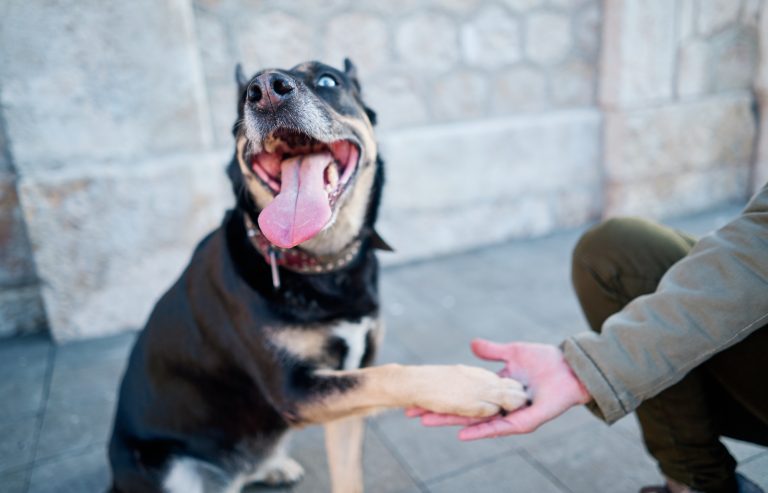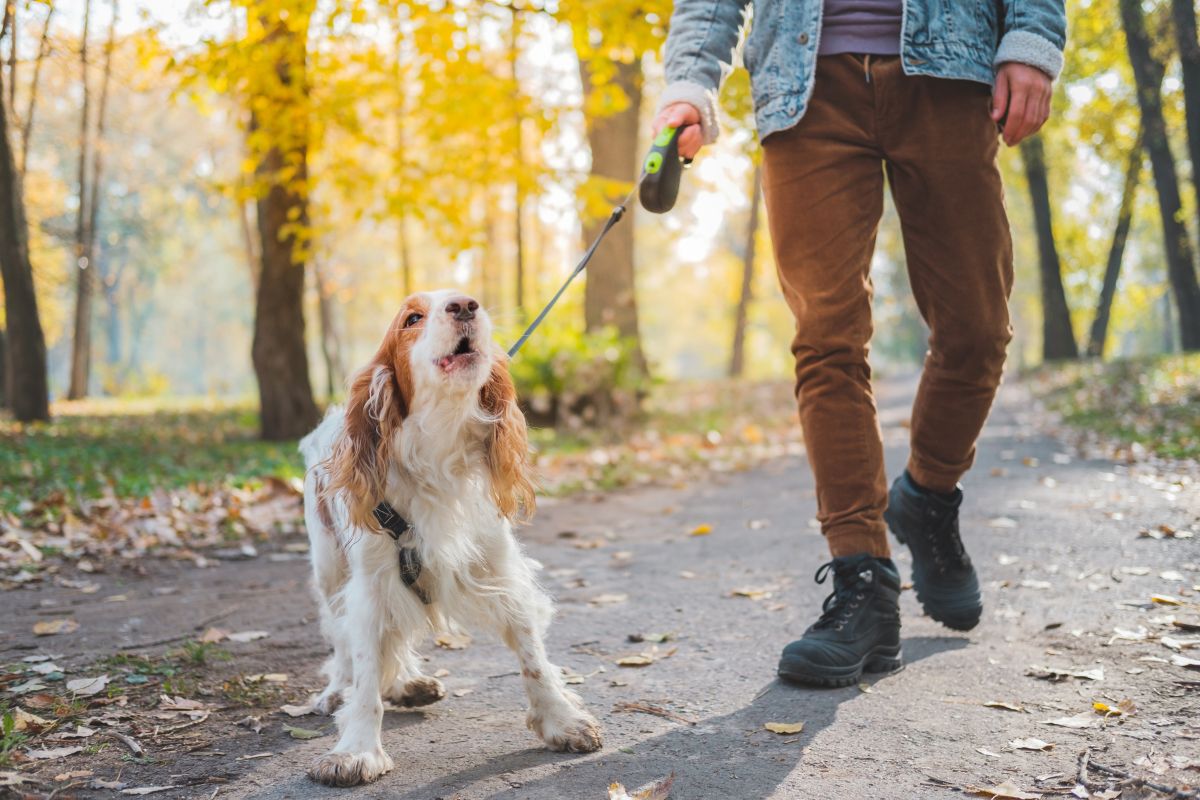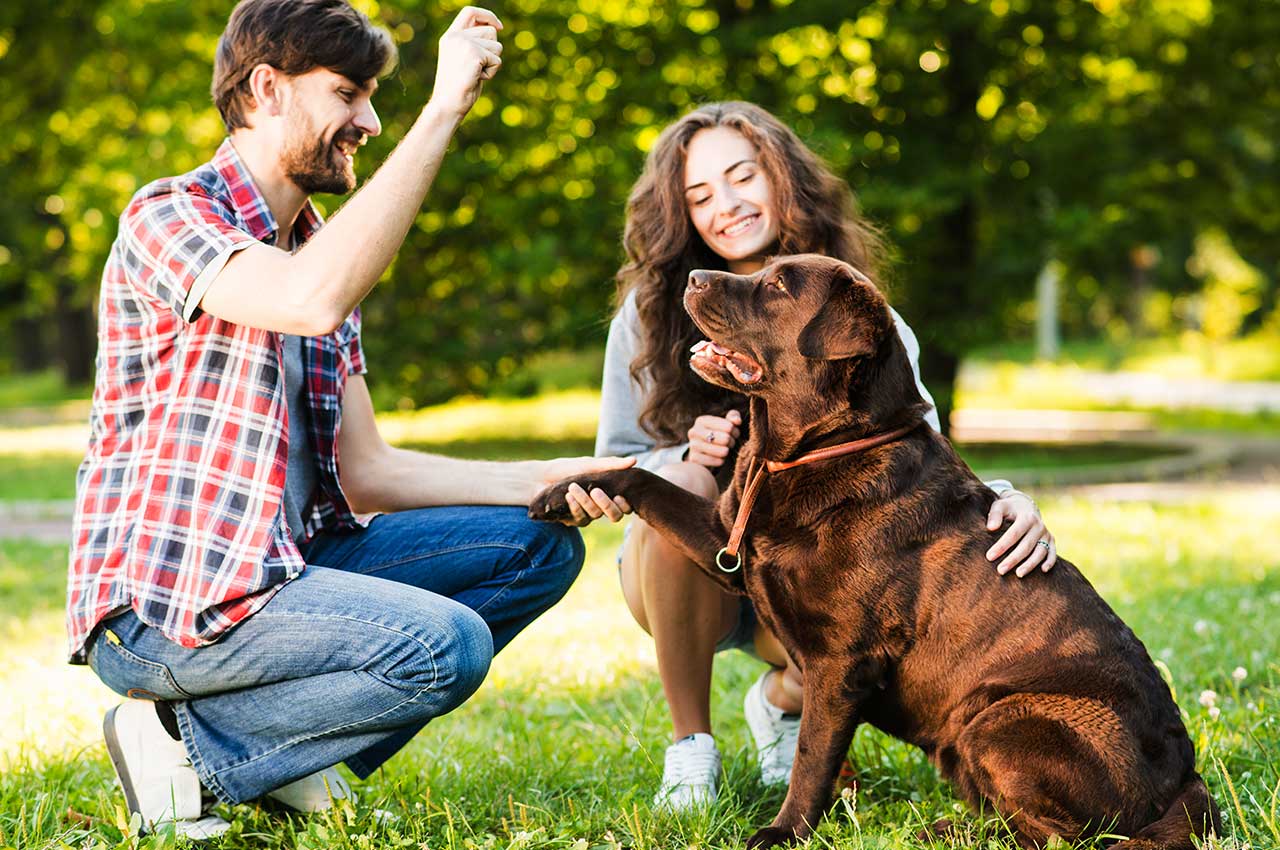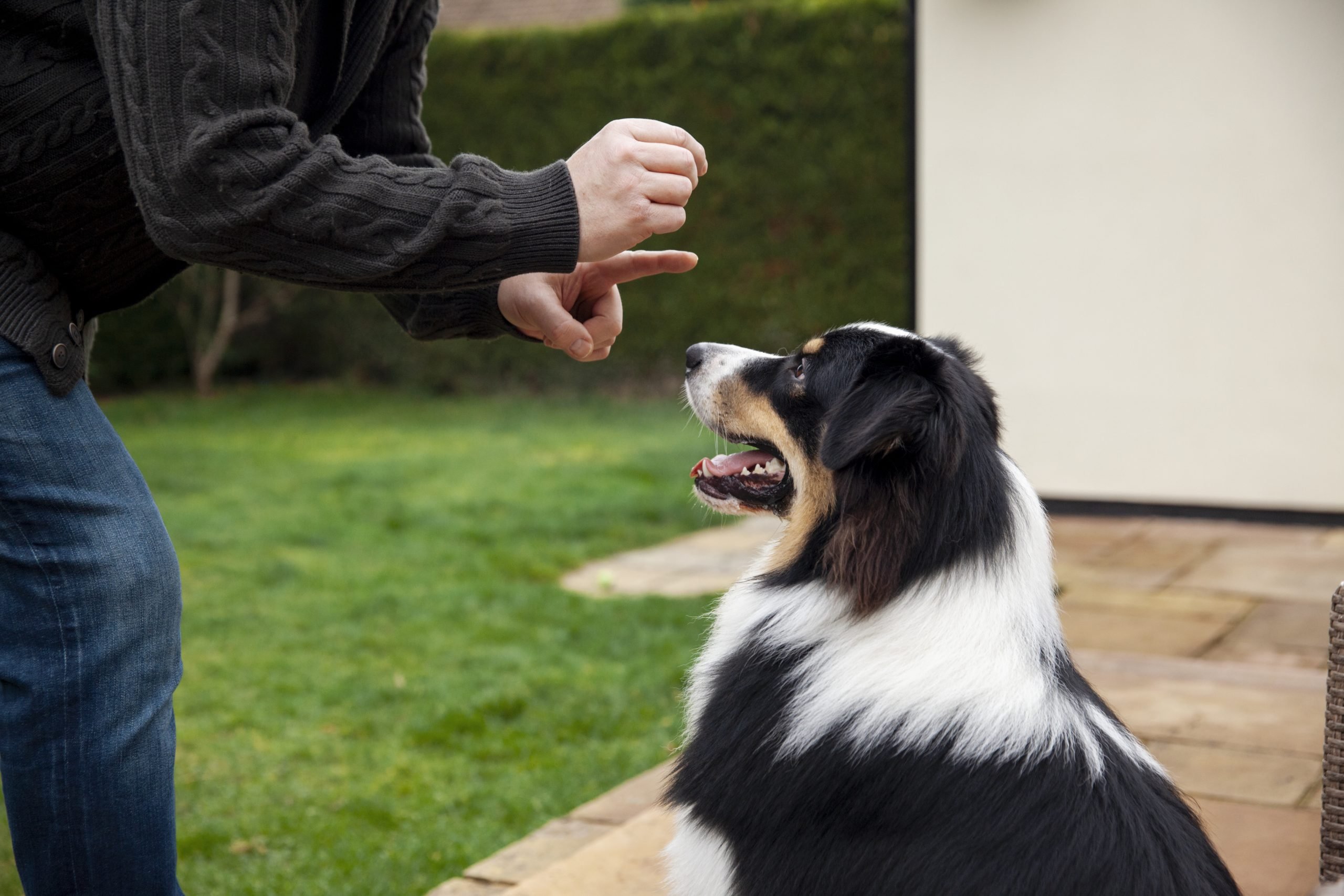This scenario has happened to many dog owners. You are out for a walk, and your dog or puppy starts barking at people. Most of us feel embarrassed when that happens. We have to remember barking is a natural behavior and communication tool for dogs. Now, we do not want to encourage barking, especially not at people we do not know. Why do dogs bark at strangers?
Well, there are many reasons why dogs bark at people. They might be excited, frustrated, worried, or uncomfortable in the situation. For example, your dog might be anxious around people, and putting it in a situation to be around 10 people trying to pet him is not a comfortable situation.
Understanding Dog’s Communication
We have to remember that dogs are highly social animals. Communication is part of dogs’ behavior. And for communicating, they use a variety of vocalizations, body language, and scents. They use these forms of communication to communicate with dogs and humans.
And barking is one of the most important aspects of communication. Dogs might use different body postures and gestures to communicate their intentions. But barking is the one that stands out the most. For example, when a dog wags its tail, it communicates excitement or friendliness. Yet, when it holds its tail low and tucked between the legs, it is a sign of fear and anxiety.
Barking is another common form of communication. And there are different reasons for barking. Here are some examples:
- Territorial barking when canines protect their territory, be it humans or space
- Playful barking, when they want to invite other animals or humans to play with them
- Attention-seeking barking, often excessive barking when they want to try and get your attention
- Alert barking, a common example of barking at a doorbell ring
Often, excessive barking is a problem that you have to solve. It might even be a sign of an underlying problem like anxiety and boredom.
Why Do Dogs Bark At Strangers?
Now let’s talk more about the reasons your dog might bark at strangers. The good news is that you can solve the barking behavior in your furry friend. But you have to find the origin of the barking problem first. Here are some reasons why dogs bark at strangers.
They Are Not Used To Strangers
A dog owner that hasn’t socialized his pet runs the risk of barking at strangers. It is one of the common mistakes novice owners make. They think their dog is theirs only. And they turn a friendly dog into a Velcro dog that loves to spend time only with its humans.
Dogs should be socialized properly early on with different people. That includes males, females, short people, tall people, elderly people, children, and even drunk people.
Territorial Instincts
We mentioned territorial barking as a common form of barking. Dogs have natural territorial behavior and instinct. In wildlife, unfamiliar creatures pose a threat when they approach an animal’s territory. So, animals have to communicate that this is their territory.
Now, we might have domesticated dogs, but that territorial behavior remains. And even worse, if you have spoiled your puppy, that territorial instinct includes you as well. Your dog might consider you part of his territory.
Previous Trauma
Dogs associate things and situations with a positive experience or a negative one. This is why you need to socialize and allow them to experience different situations early on. And make sure those experiences are positive and reward them.
Speaking of previous trauma, it happens with rescue dogs. You do not know their history. They might have had a bad experience with a similar-looking stranger which causes them to bark. In some cases, like a person that might have beaten them.
Alarm Barking
In some cases, dogs bark at strangers because they are afraid and spooked. Some puppies live by the motto of stranger danger. While it is similar to territorial barking, the motivation is different. For example, usually, territorial instincts only apply at home, not on the street. But with alarm barking, dogs might react to people they meet during your walk.
Your Reaction To Strangers
We will just mention this topic now before talking about it in depth later on. Pets pick up your feelings. If their dog owner is producing nervous, tense energy and anxiety toward a particular stranger, they will pick up the same stance.
How To Prevent Barking?
Yes, it is completely possible to prevent a dog from compulsive barking. Here are some steps you need to take to get to a calm and healthy pet.
Step 1 – Identity the cause
You cannot cure something you do not know the root of, right? There is no point in treating the symptoms until you find the root of the disease. The same applies to your barking dog problem.
Step 2 – Provide Plenty Of Exercises
There is a saying, a tired pet is a gentle and calm pet. If you do not provide enough exercise, your dog will resort to some unwanted behaviors. Whenever you get a dog, be it a rescue one or one from a breeder, make sure to pay attention to its activity levels.
Dogs that do not get enough exercise are more prone to barking.
Step 3 – Positive Reinforcement Training
Obedience training is a must for any puppy. And with training, you can easily turn a barking dog into a properly mannered puppy. But it is not something that happens overnight. You have to work on the issue and put some effort into it.
Step 4 – Professional Help
If all else fails, it might be time to call in the professionals. You should hire a certified professional dog trainer to help you with the issue. But in most cases, you can do it on your own.
How Socialization Helps With Barking
As we said before, socialization is a vital part of training and making sure you have a well-mannered puppy. Socialization should begin as early as possible. And it doesn’t mean you should take your pet to the dog park and be done with it.
Socialization ensures your puppy is well-adjusted and confident, and knows how to react to different scenarios. Here are some different aspects of socialization.
- Introduce your puppy to a variety of people of all ages, males, females, different races, heights, weights, and everything in between. Even some uncommon situations like drunk people or people in a wheelchair. Spoiler alert, dogs often bark at wheelchairs
- Socialize with other animals, because sometimes dogs might not bark at strangers, but at their animals
- Expose your dog to different environments, including the park, the urban city, a quiet lake, the beach, and everything in between
- Expose your dog to different experiences like riding in the car, wearing a collar, wearing a leash, going on a boat, and more to make them more confident in any situation
Tricks To Help You
Let’s finish off the article on why dogs bark at strangers with three games you can play and make sure your dog is well-mannered and calm during your walk.
The Name Game
It is simple, you are building value in your dog’s name. All you have to do is associate his name with looking at your and positive reinforcement. And once you do that with dog training, you can call your dog and have a calm pet instead of a barking one.
- Start in a quiet area and say your dog’s name aloud. Give a treat
- Repeat several times and pair your dog’s name with treats. This creates a positive association
- As your dog gets better at it, say the name, and reward only if the dog turns toward you
- Begin to add distractions, including more distracting environments like the front porch or close to people
- Add distance by using a loose leash
Watch Me
This one is similar to the name game, but it rewards your dog only when it establishes eye contact.
- Start with lots of treats, but do not say anything until your dog looks in your direction. A clicker helps here, but you can do with treats and marking the behavior with “Yes”
- After several repetitions, increase the difficulty by awarding looking at your eyes, not any part of your body
- Add a verbal cue like “eyes” or “watch me”
- Begin playing in a low-distraction environment and then build up to more distracting areas
Training Your Dog To Shush
Last, let’s talk about how you can train your dog to shush. You can begin at home, but for this game, your dog has to know to bark on cue first.
- Prompt your dog to bark
- While your dog is barking, bring a treat close to its nose. Dogs cannot bark and sniff at the same time
- When your dog stops barking, reward it with a treat
- Repeat several times until, and then add a cue Shush
- Start in a low-distraction area, and then increase the difficulty by adding distractions and increasing the length between shushing and reward










